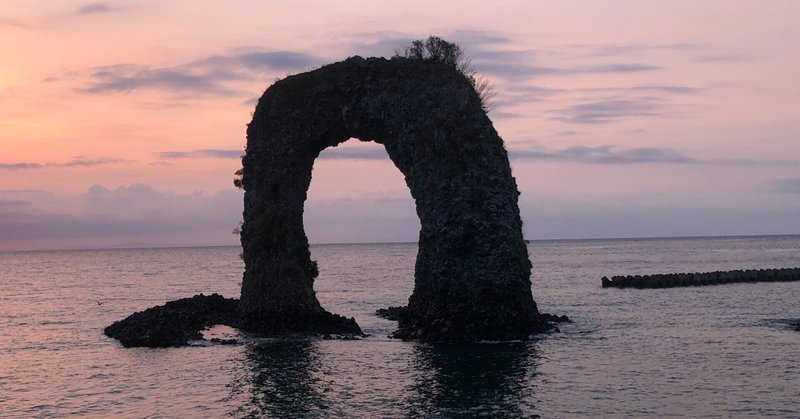
地震が起こされた意味と今やるべきことThe Meaning of the Earthquake and What We Must Do Now
あけまして、おめでとうございます。
いよいよ、2024年が始まりました。どんな年になるのでしょうね。
それにしても元旦早々、大変な地震が起きてしまいました…
いろんな覚悟が必要な年となるのかもしれません。
さて、元旦にお話ししようと用意していたテーマがあったのですが、今回は別の話をしようと思います。今回の地震のようなネガティブな出来事は、起こったことに意味を見出して教訓にしてしまうというお話をしたいと思います。
日本人の多くが人生のどこかのタイミングで災害を体験しているのでは…と思うほど災害大国な日本ですが、災害時用に食料や備品など防災備蓄の準備をしている人は、全体のなんと40%ほどしかいないという調査結果もあるそうです。多くの人が防災備蓄をしていないということですが、これだけ災害の多い国なのに無防備な人が多いことに驚きますね。
我が家はというと、最近になり備蓄を強化し始めています。実は、去年の12月にupした私のYouTube動画内でもお伝えしているのですが、10月の上旬くらいに不思議な夢を見て奥尻島へ呼ばれる…といった出来事がありました。その時、島で目にした光景によって私自身の防災意識が変わったこともあり、防災備蓄は考えつく限り強化していたところでした。
つぶやきの画像に我が家の備蓄品の一部を載せたので、よかったら参考にしてください。そこに冬場の災害時に暖をとるために必要となりそうな道具を主にピックアップしています。奥尻島の津波地震が冬に起きたということもあって、いろいろ考えさせられたということもあります。ただ、今回の能登で起きた地震や奥尻の地震を考えると、自宅が津波にさらわれないという条件が必要かもしれません。
その上で、インフラが止まった場合に必要な備蓄品と捉えておいた方が良いです。もし運よく高台に逃げられたとしても、避難所がない場合は自力で一夜を明かしたりサバイバルしたりしなければならないことを考慮すると、可能な限り車かもしくは防災リュックなどにまとめおくような対策は考えておいた方が良いでしょうね。
1993年に起きた北海道南西沖地震で、奥尻島は最大30mもの津波に襲われました。これは、8階建てのビルに匹敵する高さだそうです。津波に襲われた時の状況が写真に収められており、島の資料館ではなんとも生々しいパネルが展示されていました。そんな状況下から現在では復興を果たした奥尻島ですが、沿岸部には防潮堤が整備されていたり、いち早く徒歩で高台へ逃げられるような避難路もたくさん目にしました。もし機会があれば、奥尻島へ行かれてみてください。
話を少し戻しますが、我が家にはこの他に、防災時のサバイバルを考慮に入れた太陽光パネル付き(別売りです)のポータブル電源があります。少し高額でしたが、普段から車に積み込んで使っています。万が一、寒さの中でしばらく過ごさなければいけない場合は、この電源を駆使してポータブルの小型温風機を繋いで暖をとり、日中はパネルで発電して蓄電することを想定しています。ガソリンの消費を少しでも抑えるためです。正直、そこまで考えて準備しています。
そして、今回の地震によって更に強化していくことを考えています。2024年以降を生き延びるとはそういうことだと思うからです。
ネガティブな出来事は、この先もまだまだ起きてくる可能性があると感じますが、その度にテレビにかじりついて不安になったり怯えたりするだけでは本当に意味がないということをどうか自分に言い聞かせてください。見せられた現実を自分はどう捉え行動できるかが試されます。
自分の命、家族の命、大切な人たちの命にどれだけ真剣に向き合えるのか、そういうことを考える時間を与えられたのだと捉えてみて欲しいのです。防災備蓄は上にあげた限りではありません。クッズ次第では、もっといろんなことができると思います。
いま思いつくのは車載用の簡易トイレですが、これに関しては準備がまだできていないため近々考えておかなければいけないと思っています。女性の場合は防犯上の観点からも、安易に草むらを探すなどして外ではしない方が良いと思うためです。やはり、私自身もいろいろまだまだ準備が必要になりそうです。
Happy New Year!
Finally, the year 2024 has begun. I wonder what kind of year it will be.
By the way, a terrible earthquake occurred early on New Year's Day...
It may be a year that requires a lot of preparation.
I had a theme that I had prepared to talk about on New Year's Day, but I would like to talk about something else this time. I would like to talk about how negative events like this earthquake can be used as a lesson to make sense of what happened.
Japan is such a disaster-prone country that many Japanese have experienced a disaster at some point in their lives...but a survey shows that only about 40% of all people have disaster preparedness supplies such as food and equipment for disasters. It is surprising that so many people are unprotected in a country with so many disasters.
As for my family, we have recently started to strengthen our stockpile. As I mentioned in my YouTube video uploaded last December, I had a strange dream in early October that called me to Okushiri Island. At that time, my awareness of disaster preparedness was changed by what I saw on the island, and I had just strengthened my disaster preparedness stockpile as much as I could think of.
I have included some of the items in our stockpile in the image of my tsubuyaki, if you would like to take a look. There I have mainly picked up tools that we might need to keep warm in the event of a winter disaster. Partly because the Okushiri Tsunami earthquake happened in winter, it made me think a lot about it. However, considering the recent earthquakes in Noto and Okushiri, it may be necessary to have the condition that your home is not exposed to tsunami.
On top of that, it is best to view this as a necessary stockpile in case the infrastructure stops. Even if you are lucky enough to escape to higher ground, you may have to spend the night or survive on your own if there is no shelter, so you should consider packing as much as possible in your car or an emergency rucksack.
In 1993, Okushiri Island was hit by a tsunami up to 30 meters high after the Hokkaido Southwest Offshore Earthquake. This is said to be equivalent to the height of an eight-story building. Photographs of the tsunami's impact are on display in the island's archives, and the island's museum has a very graphic panel displaying the scene of the tsunami. Okushiri Island has now recovered from such a situation, and I saw many seawalls along the coastline and evacuation routes that allow people to escape to higher ground on foot as quickly as possible. If you have a chance, please visit Okushiri Island.
Back to the story a bit, we also have a portable power supply with a solar panel (sold separately) that is designed for disaster survival. It was a bit expensive, but we usually load it into the car and use it. In case we have to spend some time in the cold, we expect to make full use of this power supply and connect a small portable warm air heater to keep warm, and use the panel to generate and store electricity during the day. This is to reduce gasoline consumption as much as possible. Frankly speaking, we are preparing to that extent.
And we are thinking of further strengthening them as a result of this earthquake, because I believe that is what it means to survive beyond 2024.
I feel that negative events may still occur in the future, but please remind yourself that there is really no point in just biting at the TV and being anxious and frightened every time they happen. The test will be how you perceive and act on the reality you are shown.
I would like you to consider that you have been given time to think about how seriously you can take your own life, the lives of your family members, and the lives of your loved ones. Disaster prevention stockpiles are not limited to those listed above. There are many more things that can be done depending on the goods.
The one that comes to mind right now is a portable toilet for use in vehicles, but we are not yet prepared for this and will have to think about it in the near future. I think it is better for women not to do it outside, for security reasons, for example, to look for it easily in the grass. After all, it seems that I myself will still need to make various preparations.
この記事が気に入ったらサポートをしてみませんか?
